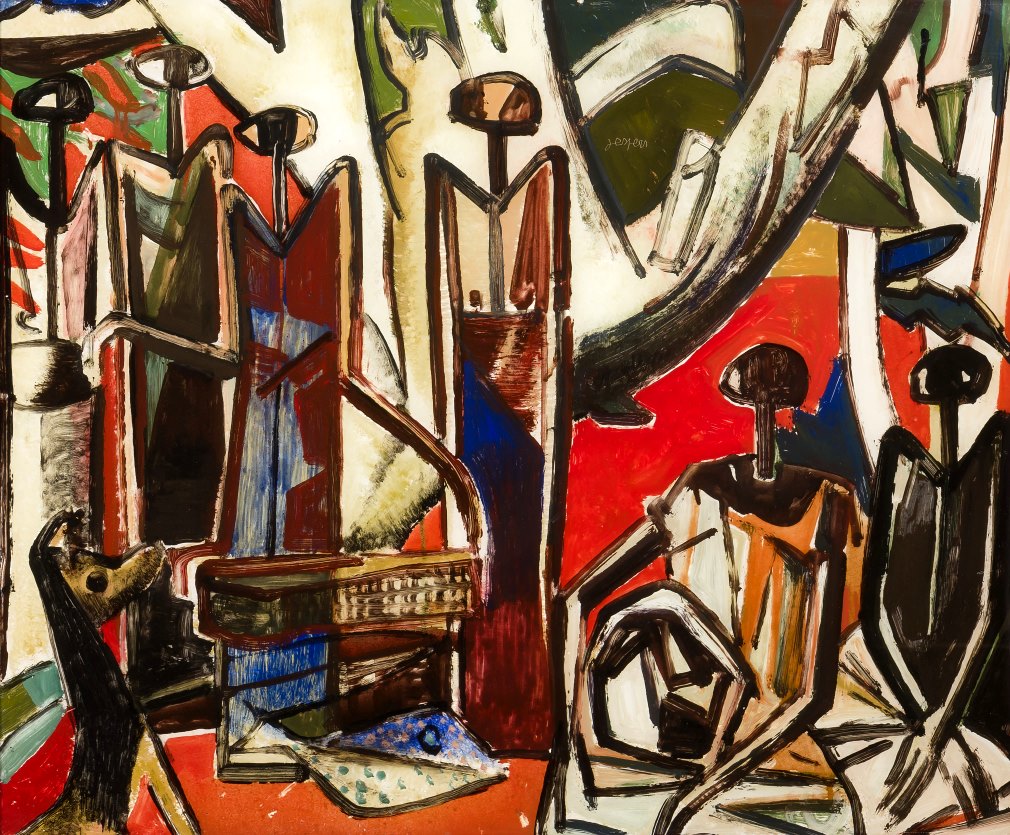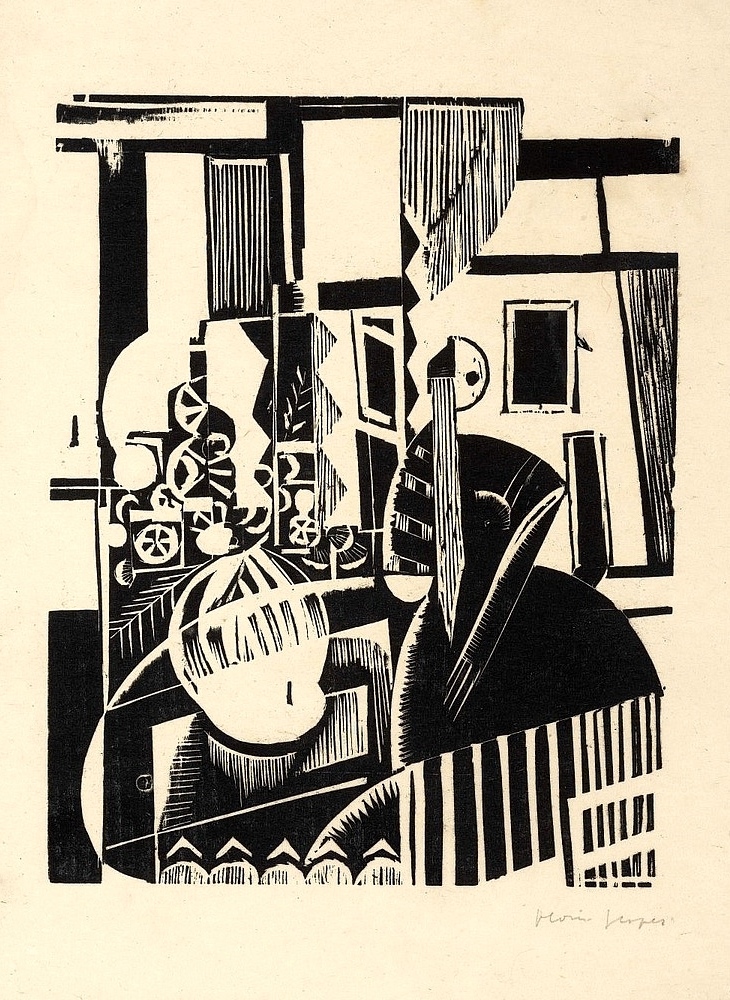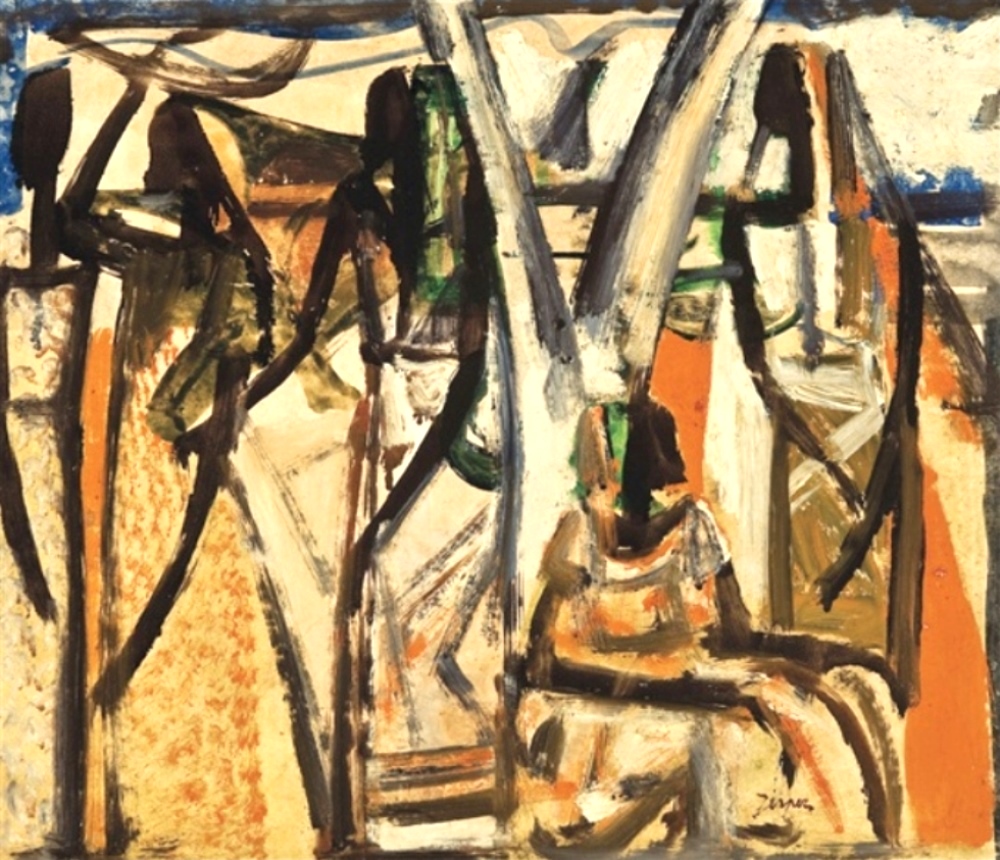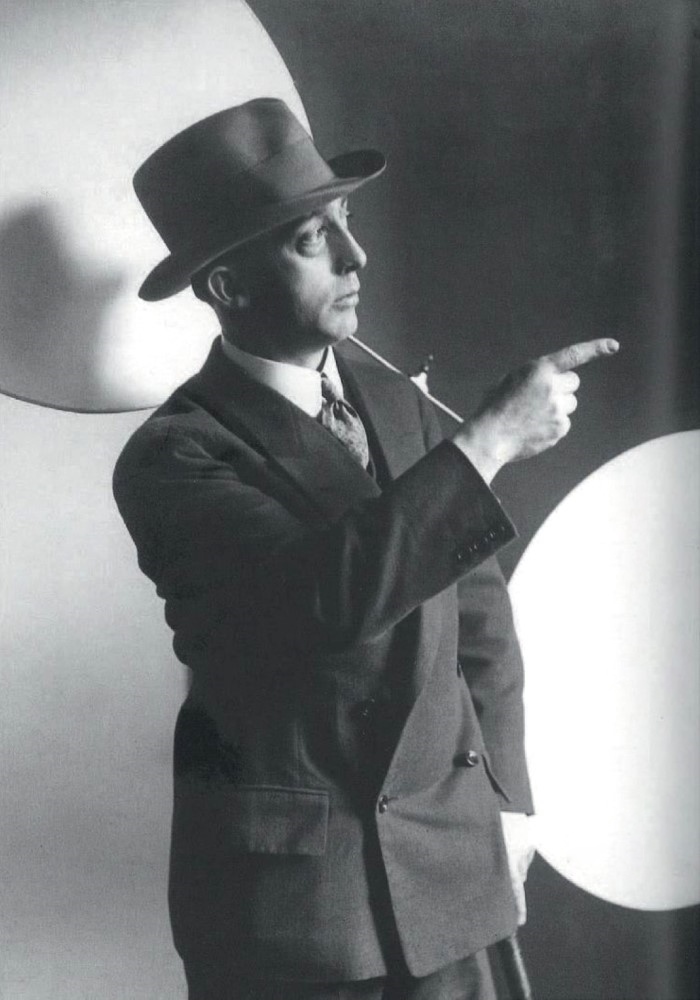Floris Jespers was born on March 18, 1889 and died on April 16, 1965. He was a Belgian Avant-garde painter. After his graduation from the Antwerp Academy of Fine Arts, he hooked up with the poet Paul Van Ostaijen and joined the Antwerp avant-garde movement of the 1920s.
Floris was also a musician, he played the violoncello.
He contributed to the publications’’ Ça Ira, Le Centaure and Sélection and befriended Jean Metzinger and Albert Gleizes when they published ‘’Du Cubisme’’ in 1913.
In 1921 he had an exhibition abroad for the first time (the exhibition of the Dutch artistic group De Branding with Kurt Schwitters and Fokko Mees). In 1925 he became a member of Contemporary Art (Kunst van Heden).
He travelled to Belgian Congo for the first time in 1951. He stayed in the city of Kamina where his son Mark worked as a doctor. The journey was a revelation for him. He translated his impressions of African women into colorful frescoes. The African paintings of Jespers are not genre scenes but they present a greater vision of Africa.
From the mysterious gazes and the faces of the ‘’Swimmers’’ painted in Ostend in 1927 and the Congolese women of the fifties the same idealised vision of the untouchable and enigmatic African woman emerges. He also used the verre églomisé technique (painting behind glass).
He was ordered a large mural for the Palais du Congo at Expo 58 in Brussels.
His father Emile and brother Oscar were sculptors.
Sources: Wikipedia and several others. Some translations #ysebaertlouisseizearts
#biography




